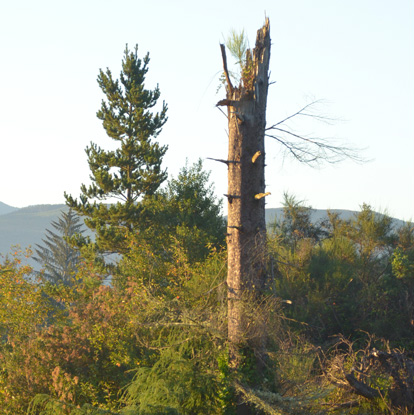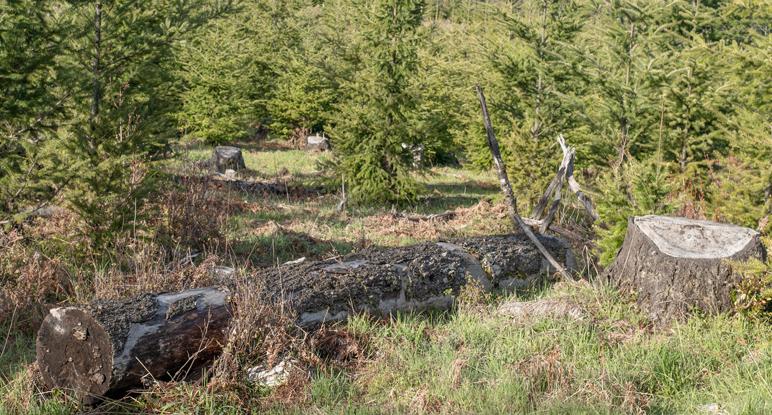Wildlife Habitat
How is wildlife protected in Oregon's timber-producing forests?
Forest management activities can affect wildlife that rely on forested habitats. Logging and forest road construction help provide the wood products that society uses every day, but they also alter wildlife habitat in a forest.
The goal of Oregon’s wildlife-related forest practice laws is to protect the habitat of sensitive and endangered species, and to leave crucial structural habitat components in place after logging. This helps make areas where trees have been cut down more closely resemble natural forest openings caused by wildfires or other natural disasters, which contain standing dead trees (called “snags”), patches of live trees, and down logs, all of which are important habitat for an array of wild animals.
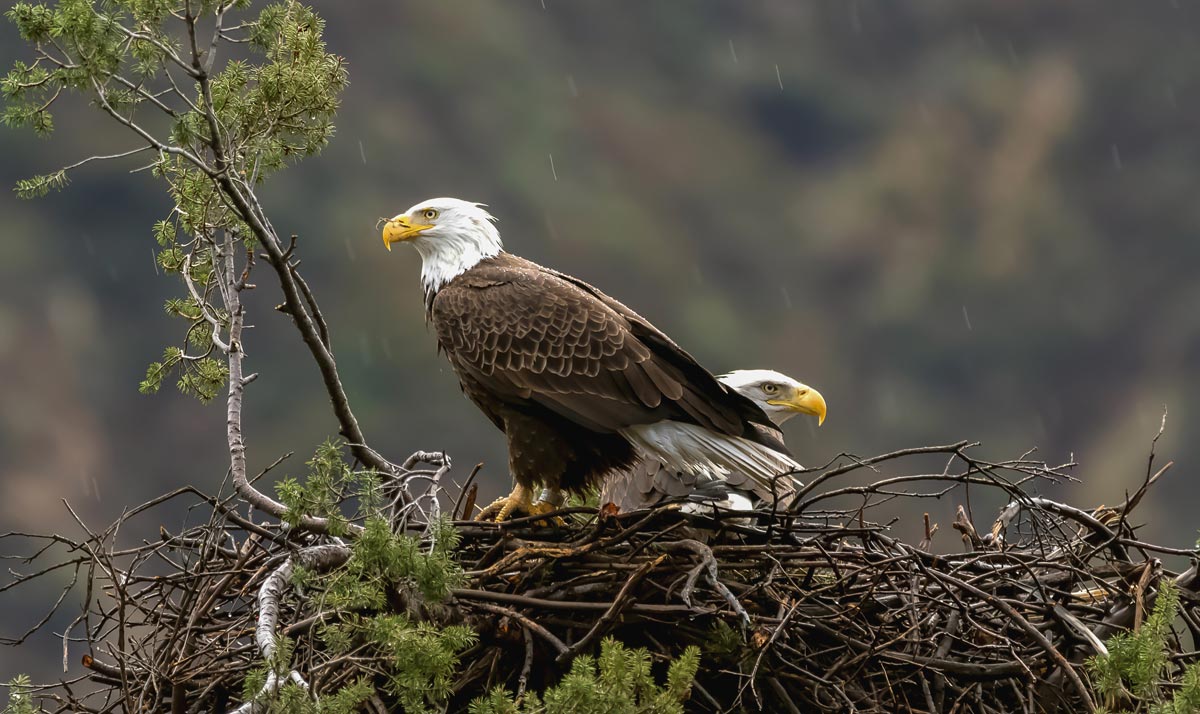
Wildlife considerations before logging
Forest landowners must be aware of sensitive wildlife habitat sites on their property. Sensitive wildlife include fish, amphibians, birds and other animal species identified as threatened and endangered by the Oregon State Fish and Wildlife Commission, or federally listed under the Endangered Species Act.
Areas around particular species habitat, such as a bald eagle’s nest, must be left undisturbed by logging operations, and need special consideration depending on the time of year. The particular protective requirements vary between species. A local Oregon Department of Forestry (ODF) office can offer guidelines for specific species.
Examples include:
- northern spotted owl: 70-acre area surrounding core spotted owl habitat must be protected.
- bald eagle: 330 feet in all directions from a bald eagle nest tree must be protected.
- great blue heron: 300 feet in all directions from a great blue heron nest or rookery must be protected.
It is illegal for a forest landowner to disturb, harass or attempt to displace sensitive species from their property. View a complete list of threatened and endangered species that receive special protections under state and federal law in Oregon.
Leaving wildlife habitat during and after logging
When a timber harvest is larger than 25 acres, Oregon’s forest practice laws require leaving “structure” in the clearing, to provide habitat components similar to a natural opening. These include:
Standing trees: Loggers and landowners must leave standing live trees or snags (standing dead trees), at least two per acre of harvest, each at least 30 feet tall and 11 inches in diameter. At least half of these must be conifers. Snags provide homes for owls, woodpeckers, bats, squirrels, wood ducks, raccoons and many other animals. More than 50 species of birds and mammals use snags for nesting, feeding and shelter.
Down logs: Crews must leave at least two logs per acre on the ground, each at least six feet long and 10 cubic feet in volume. Rotting logs are home to hundreds of species, including amphibians, reptiles, birds and mammals, not to mention insects that are food for other animals.
Location, location, location: Trees and down logs don’t have to be left in each acre. They may be grouped into small groves and clusters, and are often left near streams, lakes or wetlands.
Special requirements: ODF can require that a timber harvest be modified to protect sensitive wildlife sites, such as areas actively used by bald eagles, osprey, great blue heron, northern spotted owl and other species of concern.
Protections for endangered species
Threatened and endangered species get special protections in Oregon’s forests. Threatened species are those likely to become endangered in the foreseeable future unless conservation measures are taken. Endangered species are those in danger of becoming extinct within the foreseeable future, throughout all or a significant portion of their range. In addition to federal protections, the Oregon Forest Practices Act (OFPA) has rules designed to protect threatened and endangered species that live in Oregon’s forests.
View a complete list of threatened and endangered species that receive special protections under state and federal law in Oregon.
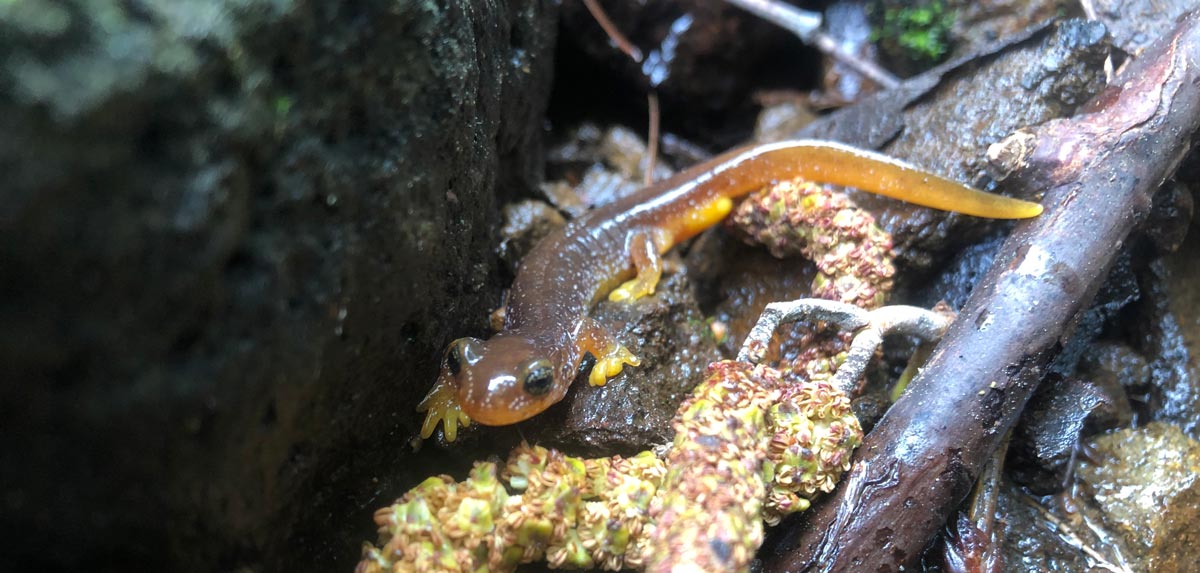
Aquatic habitat protections for amphibians
In forests managed for timber production, streams and wetlands are the areas with the most legal protection. Oregon law requires nearly all forested streams and wetlands to have areas of uncut trees and vegetation left around them. These areas are known as riparian buffers, riparian management areas, RMAs, or stream buffers.
Although stream buffers were originally intended to protect fish and water, a large number of amphibians and invertebrates benefit from these protected, moist habitats. Many amphibians spend significant time outside of the water, but most stay close to stream banks.
Stream buffer requirements were expanded in 2022, after new laws resulting from agreements reached between the timber industry and conservation groups during the Private Forest Accord negotiations went into effect. Stream buffer widths were increased overall, and should benefit stream-dwelling amphibians. Four specific salamander species and one frog were listed for protection under the 2022 laws. The amphibian species identified for special protection in 2022 were:
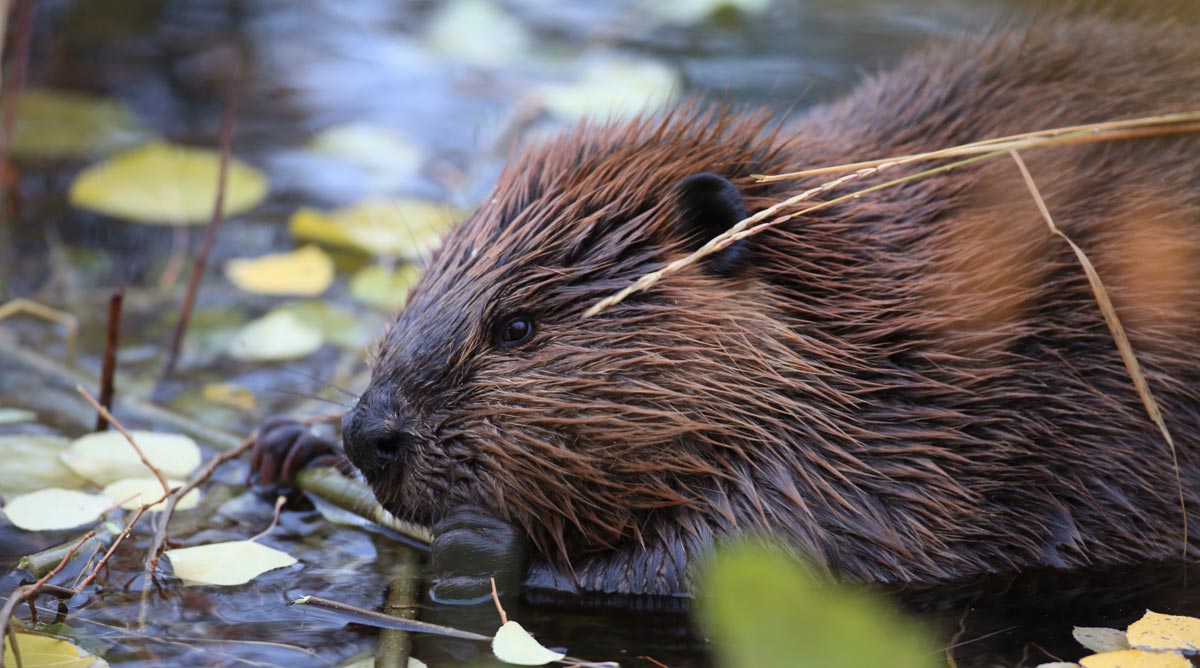
Expanded protections for beaver
Changes to Oregon’s forest protection laws in 2022 included new rules related to protecting the American beaver.
Beaver can cut trees in riparian zones, and their dams can block culverts that are necessary to allow fish to travel upstream. But beaver are also what wildlife biologists call a “keystone species” that play an important role in forest ecosystems. Their dams create aquatic habitat that benefits numerous juvenile fish and insect species, and other wildlife. Beaver dams also help slow water, spreading it across a floodplain, recharging groundwater and, in some places, help streams that might otherwise go dry in summer.
Oregon law prohibits large private forestland owners (defined as owning more than 5,000 acres) from commercial beaver trapping on their properties. Forest landowners must also prioritize non-lethal strategies for addressing beaver conflicts by working with the Oregon Department of Fish and Wildlife.
Any beaver killed on large commercial forestland must be reported by the landowner to the Oregon Department of Fish and Wildlife, to help improve their understanding of the level of impacts beaver have on private landowners.
 Oregon Forest Laws
Oregon Forest Laws